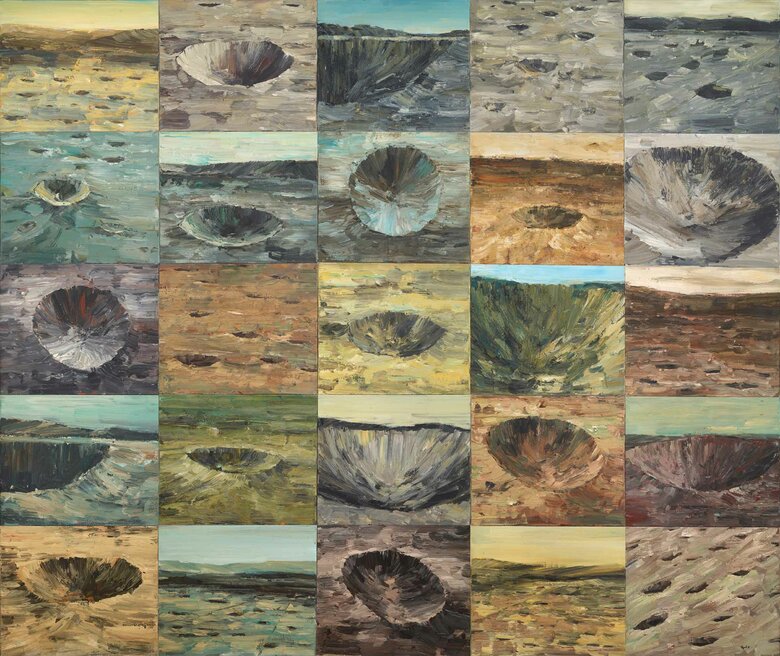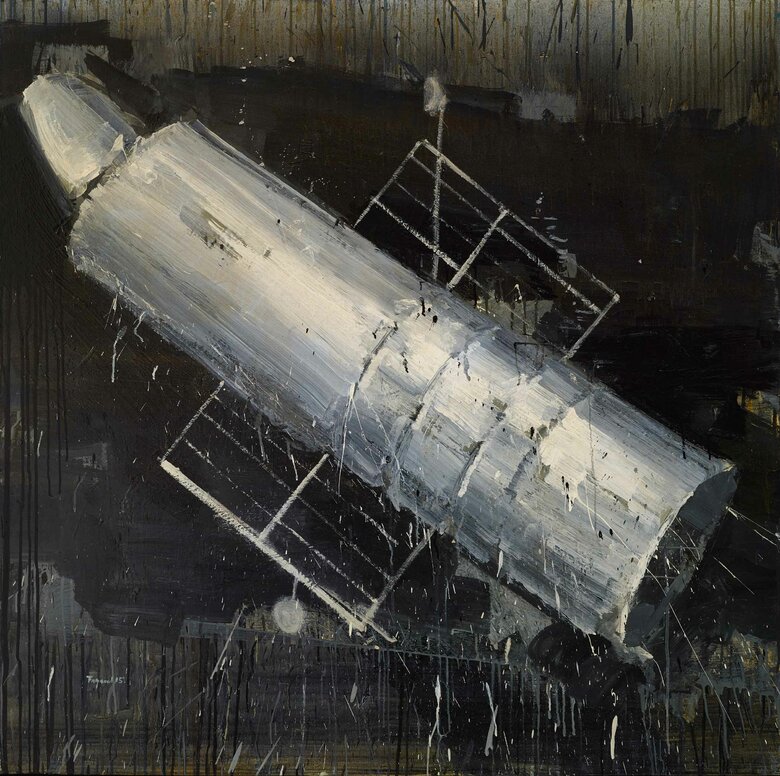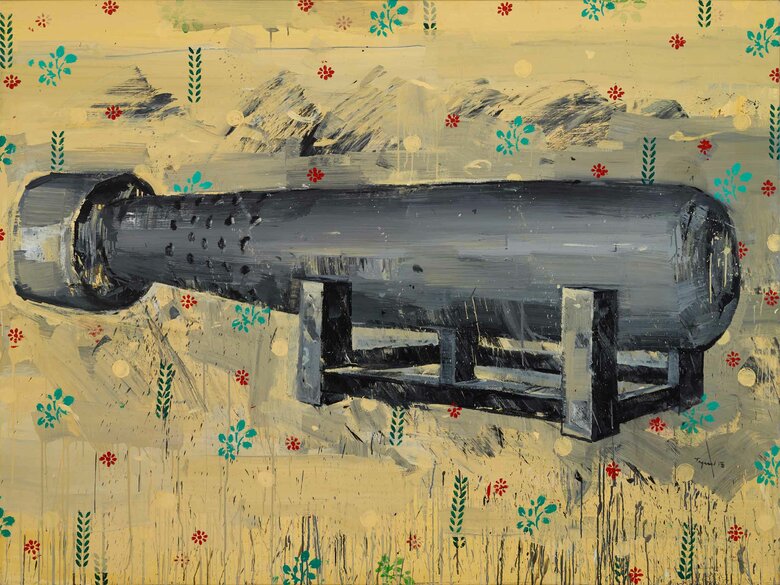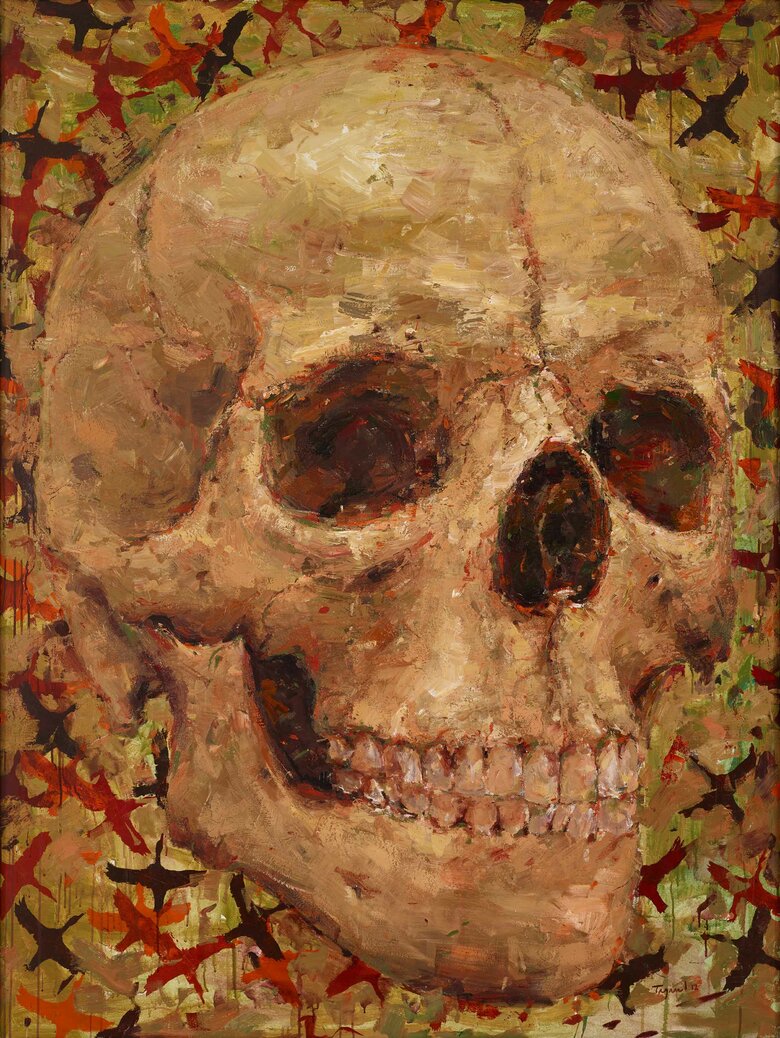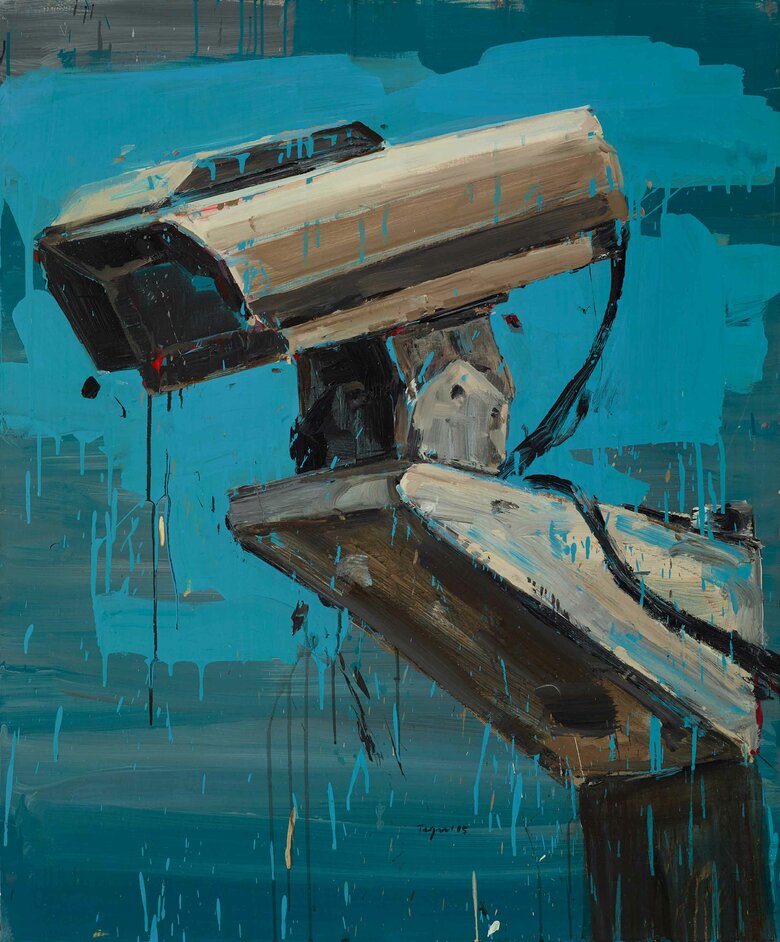A blazing cloud of incandescent color dominates the canvas, its fiery billows expanding outward in an immense, uncontainable form. Tagreed Darghouth’s untitled piece from the series Brighter than a Thousand Suns, 2014, seizes the viewer’s attention through its monumental scale and the explosive energy of its composition. The work is immediately arresting, serving as a vision of destructive power rendered with painterly intensity.
The canvas measures two meters square, amplifying the impact of the subject. Layers of oil paint are applied in thick impasto, creating a dense, tactile surface where colors bleed, drip, and collide. Reds, oranges, yellows, and touches of black intermingle, conjuring both fire and ash. The central mushroom cloud form is recognizable, yet it is not rendered with precision; instead, it is dissolved into expressive brushstrokes, emphasizing energy over detail. Vertical drips cut through the composition, pulling the viewer’s gaze downward and reinforcing the sense of gravity and collapse.
Darghouth, born in Saida in 1979, studied fine arts at the Lebanese University before continuing at the École nationale supérieure des arts décoratifs in Paris and under Marwan Kassab Bashi at Darat al Funun in Amman. Her practice often engages with global socio-political issues, ranging from cosmetic surgery and satellite imagery to displacement and conflict, through large-scale painterly meditations. In the series Brighter than a Thousand Suns, she turns to nuclear iconography, invoking the enduring visual language of 20th war. The title derives from the words of J. Robert Oppenheimer, who famously quoted the Bhagavad Gita when witnessing the first atomic explosion in 1945.
The work’s power lies in its balance of figuration and abstraction. While the mushroom cloud form is instantly identifiable, the chaotic application of paint resists a fixed reading, merging fire, smoke, and atmosphere. The palette alternates between blazing warmth and charred darkness, heightening the sense of volatility. Drips and splatters contribute to a feeling of uncontrollable expansion, as if the explosion extends beyond the limits of the canvas. The sheer scale of the painting forces the viewer into confrontation, making the act of looking itself an uneasy experience.
By translating the image of a nuclear explosion into painterly abstraction, Darghouth underscores the duality of awe and terror embedded in atomic imagery. The title Brighter than a Thousand Suns captures the paradox of the sublime luminosity of the blast contrasted with its catastrophic consequences. In Darghouth’s hands, the mushroom cloud becomes both a literal representation of destructive power and a metaphor for humanity’s entanglement with technological violence. The drips and streaks suggest that even monumental events are subject to decay, memory, and reinterpretation.
Darghouth’s painting stands as both a visual spectacle and a sober reminder of human devastation. Through her characteristic use of scale, texture, and urgent color, she transforms the image of the mushroom cloud into a meditation on violence, fragility, and historical memory. The work aligns with her broader practice of confronting global issues, inviting viewers to grapple with the tension between beauty and destruction that defines much of contemporary existence.
signed and dated in English front lower left

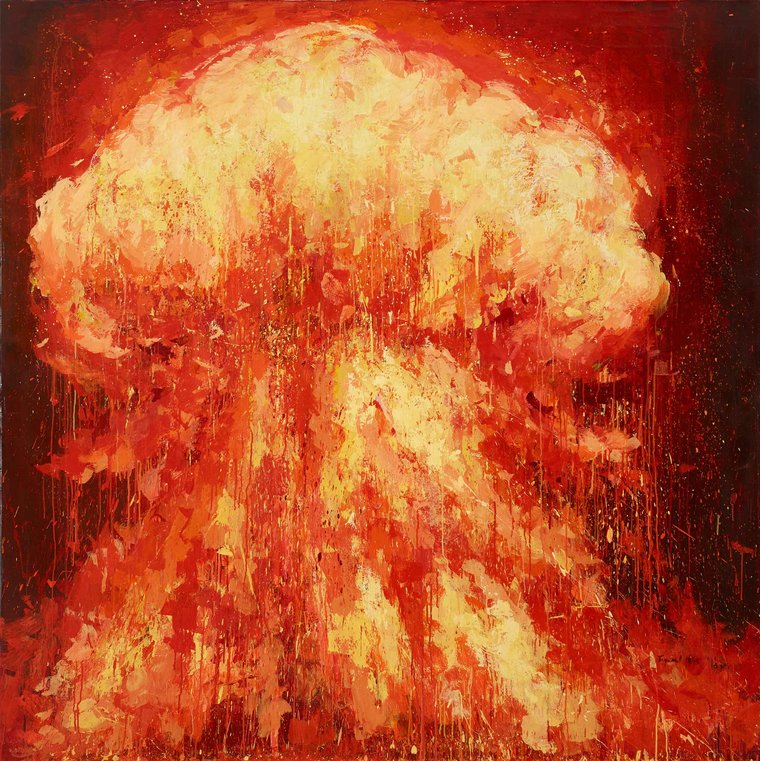

-Front.jpg)
-Front.jpg)
